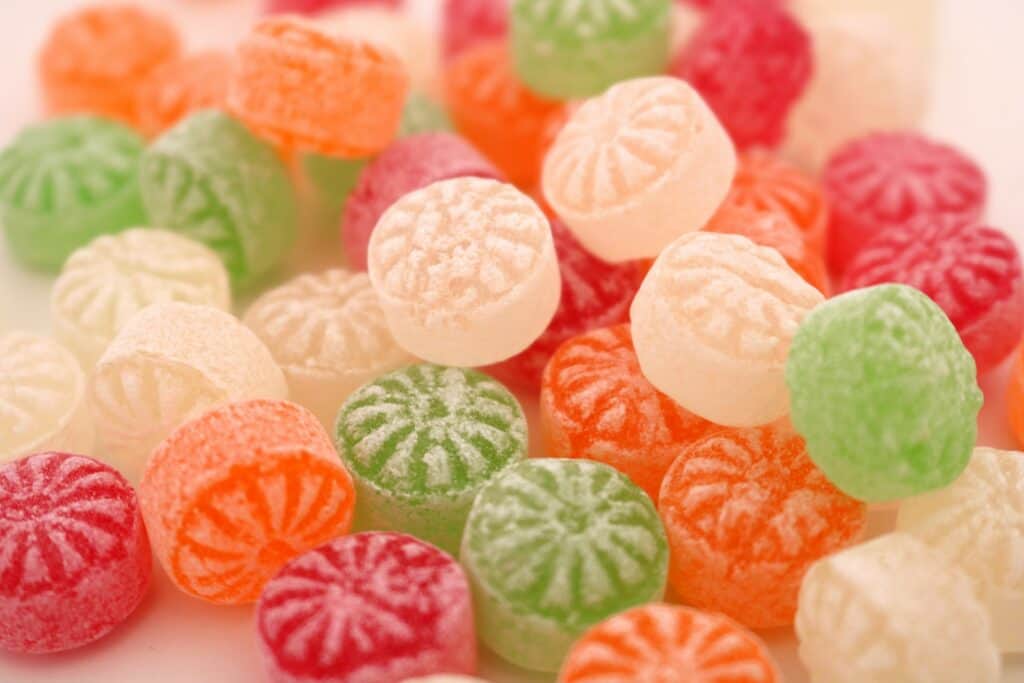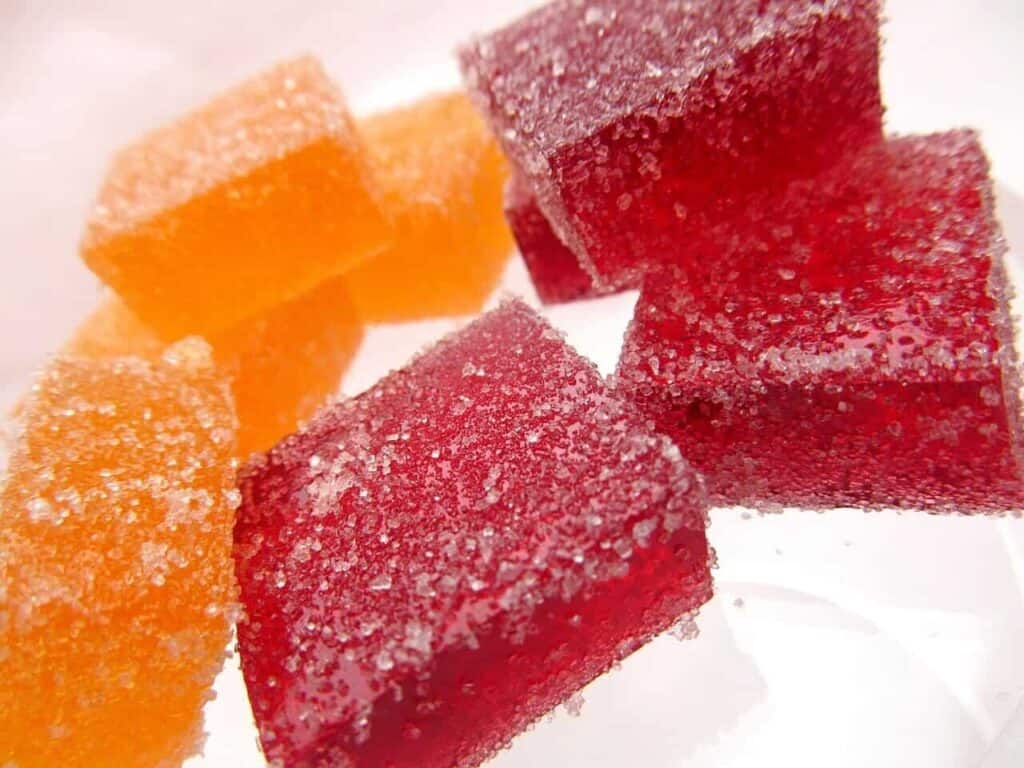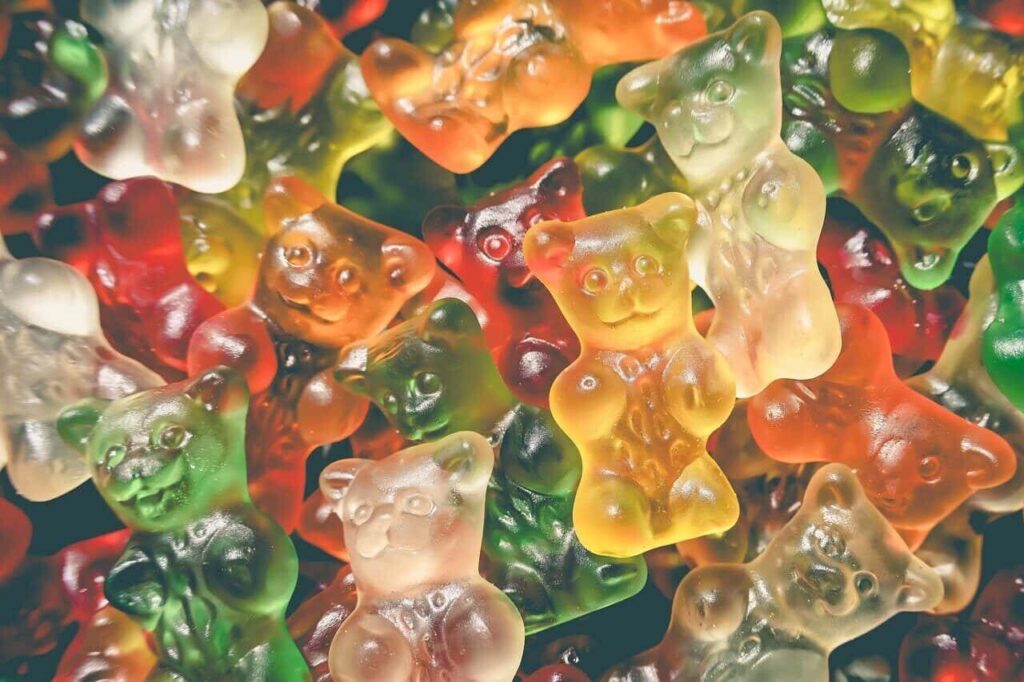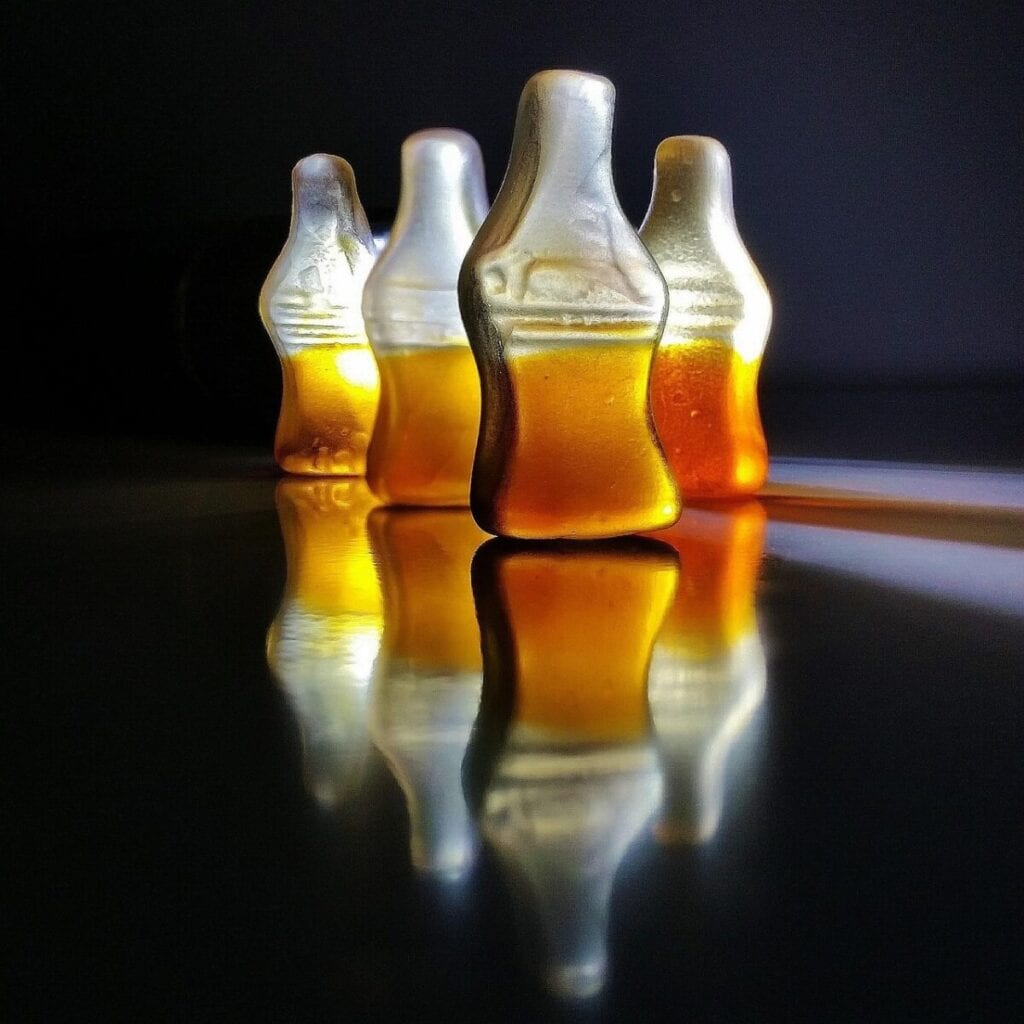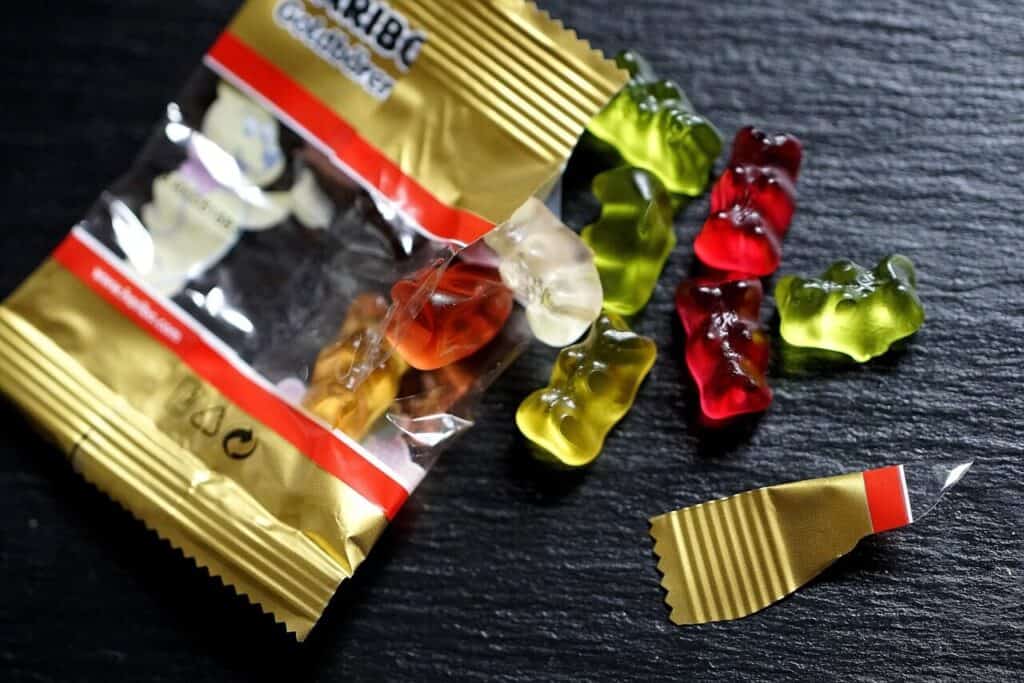Introduction : Déballer la fabrication en vrac
La fabrication de bonbons gélifiés à grande échelle est complexe. Elle fait appel à la science alimentaire et à l'ingénierie des procédés. Cela va bien au-delà de simples recettes. Il s'agit de réactions chimiques contrôlées et de machines précises.
Cet article présente le processus technique pour fabrication de bonbons gélifiés en vrac. Nous examinerons les aspects scientifiques, de la chimie des ingrédients aux contrôles de qualité finaux. Il ne s'agit pas d'un guide du consommateur. Il s'agit d'une analyse technique destinée aux professionnels du secteur.
Il est important de comprendre ces principes. Vous en avez besoin pour développer de nouveaux produits, optimiser les lignes de production existantes, et assurer une qualité constante à l'échelle.
Nous couvrirons ces étapes clés :
- La chimie fondamentale des principaux ingrédients des bonbons gélifiés.
- Analyse comparative des gélifiants primaires.
- Une décomposition étape par étape de la chaîne de production industrielle.
- Dépannage technique pour les défauts de fabrication courants.
- Tendances futures de la technologie des chewing-gums.
La chimie fondamentale
La texture, la stabilité et le goût d'un chewing-gum dépendent d'interactions chimiques précises entre ses principaux composants. Chaque ingrédient a une fonction spécifique et mesurable dans la formule.
Agents gélifiants : Le cœur des hydrocolloïdes
Ce qui fait d'un chewing-gum un chewing-gum, c'est sa structure gélifiée. Celle-ci provient des hydrocolloïdes. Il s'agit de polymères à longue chaîne qui forment un réseau tridimensionnel dans l'eau. Ils emprisonnent l'eau pour créer une texture semi-solide.
Le choix du bon hydrocolloïde est la décision la plus importante dans la formulation des gommes. Les options comprennent la gélatine, la pectine ou l'amidon. Ce choix définit le comportement final en termes de mastication et de fonte.
Les édulcorants : Plus qu'un simple goût
Les édulcorants donnent du goût, mais leur principale fonction technique est de contrôler la texture et l'activité de l'eau. Ce contrôle empêche la croissance microbienne et garantit la stabilité des produits en rayon.
Le saccharose et le sirop de glucose font le gros du travail. Le rapport entre les deux est essentiel. Le sirop de glucose agit comme un agent raclant. Il empêche le saccharose de cristalliser. Cela permet d'éviter une texture granuleuse et de conserver une bonne mâche.
Les formulations sans sucre utilisent des polyols tels que le sorbitol et le maltitol. Ceux-ci posent des problèmes techniques. Ils ont un point de brunissement de Maillard plus bas et une hygroscopicité élevée. Cela peut entraîner un effet collant s'ils ne sont pas gérés correctement.
Acides : Arôme et gélification
Les acides de qualité alimentaire tels que les acides citrique, malique et tartrique apportent la saveur piquante qui équilibre le goût sucré.
Leur rôle technique est encore plus important. Les acides abaissent le pH du mélange gommeux. C'est nécessaire pour que certains hydrocolloïdes se fixent correctement. La pectine à haute teneur en méthoxyle (HM) ne gélifie pas si le pH n'est pas compris dans une fourchette étroite, généralement de 3,2 à 3,6.
Arômes, colorants et additifs
Les arômes et les couleurs doivent résister à la chaleur et à l'acidité. Les températures de cuisson élevées peuvent dégrader les composés aromatiques volatils et certains colorants naturels.
Les agents de démoulage sont essentiels pour manipuler les bonbons gélifiés en vrac. Une légère couche de cire de carnauba ou d'huile de triglycérides à chaîne moyenne (TCM) est appliquée dans un bac de polissage. Cela empêche les bonbons gélifiés de coller les uns aux autres dans l'emballage et leur confère une brillance attrayante.
L'épreuve de force de la matrice de gélification
Le choix du bon gélifiant est une décision technique. Il a un impact sur la texture, le coût, les paramètres de traitement et le positionnement sur le marché. Une comparaison directe montre les avantages et les limites de chaque hydrocolloïde primaire.
Comprendre les paramètres critiques
Nous évaluons les gélifiants sur la base de plusieurs paramètres techniques clés. Il s'agit notamment du profil de texture final et du mécanisme et des conditions nécessaires à la prise. Nous examinons également la tolérance à la transformation, la clarté du produit final et la source de l'ingrédient. La source influe sur les allégations d'étiquetage telles que "végétalien".
Tableau d'analyse comparative
Ce tableau fournit une comparaison technique de la gélatine, de la pectine et de l'amidon modifié. Ces données sont essentielles pour tout développeur de produit formulant un nouveau bonbon gélifié.
Fonctionnalité | Gélatine (bovine/porcine) | Pectine (HM/LM) | Amidon modifié |
Profil de texture | Élasticité, mastication, fonte lente ("mastication classique") | Morsure courte et tendre, rupture nette (moins "masticatoire") | Court, lourd, souvent opaque, peut être "pâteux" |
Mécanisme de réglage | Réversible thermiquement (fond à la chaleur, durcit au froid) | Requiert un pH et une concentration en sucre spécifiques (pectine HM) | Se fixe pendant le refroidissement et le séchage, n'est pas thermoréversible |
Température de traitement | Des températures de cuisson plus basses pour éviter la dégradation | Des températures de cuisson plus élevées sont possibles | La gélatinisation nécessite une cuisson à haut cisaillement. |
Clarté | Excellente clarté et brillance | Bonne clarté, peut être légèrement trouble | Opaque |
Source/Étiquetage | Origine animale (non végétalien/halal/casher, sauf indication contraire) | D'origine végétale (source de fruits), adapté aux végétaliens | À base de plantes (maïs, tapioca), adapté aux végétaliens |
La gélatine offre une mastication classique et élastique ainsi qu'une excellente clarté. Mais son origine animale l'exclut des marchés végétaliens et de certains régimes alimentaires religieux. Sa réversibilité thermique est une caractéristique essentielle de la transformation.
La pectine donne une bouchée plus nette et plus courte et est d'origine végétale. Elle est donc idéale pour le marché végétalien. Cependant, elle exige un contrôle strict du pH et de la concentration en solides pour obtenir un gel adéquat.
L'amidon modifié est rentable et d'origine végétale. Il crée une pâte à mâcher lourde et de texture courte. Il donne un produit opaque et n'est pas thermoréversible. Les erreurs de transformation sont donc difficiles à corriger.
L'effondrement de la chaîne de production
La fabrication industrielle de gommes est un processus continu et hautement automatisé. Chaque étape est conçue dans un souci d'efficacité, de cohérence et d'hygiène.
Étape 1 : Composition et précuisson
Le processus commence par la préparation. Les ingrédients secs et liquides sont mélangés pour créer un mélange uniforme. L'ordre d'ajout est essentiel. Les gélifiants sont généralement dispersés dans l'eau en premier pour assurer une hydratation complète avant d'ajouter les sucres.
Ce mélange est ensuite doucement chauffé dans une cuve de précuisson pour commencer à dissoudre les solides.
Étape 2 : Cuisson jusqu'aux solides finaux
Le mélange est pompé vers un cuiseur industriel, souvent un cuiseur à jet. Cet équipement utilise l'injection directe de vapeur. Il cuit la masse jusqu'à ce qu'elle atteigne sa teneur finale en solides en quelques secondes. Cela permet de minimiser la dégradation des ingrédients par la chaleur.
Les solides cibles sont mesurés en degrés Brix (°Bx). Ils se situent généralement entre 78 et 82°Bx. Cette forte concentration de sucre réduit l'activité de l'eau. Cela garantit la stabilité microbiologique du produit final.
Étape 3 : Dosage des substances actives
Après la cuisson, la masse gommeuse chaude est maintenue dans un réservoir tampon. C'est là que sont ajoutés les ingrédients sensibles à la chaleur et volatils. Il s'agit notamment d'acides, d'arômes et de colorants.
Pour ce faire, des systèmes d'injection et de mélange en ligne de haute précision sont utilisés. Cela permet d'assurer une uniformité parfaite dans tout le lot sans exposer les actifs à la température de cuisson maximale.
Étape 4 : Dépôt - Au cœur de la formation
La masse gélifiée liquide finie est acheminée vers un déposeur. Celui-ci répartit la quantité exacte dans les moules. Il existe deux méthodes principales.
La méthode traditionnelle est la ligne mogul amidon. Impressions de la la forme gommeuse est fabriquée dans des plateaux remplis d'amidon conditionné de qualité alimentaire. Le déposant remplit ces empreintes. L'amidon a deux fonctions : il maintient la forme de la gomme et attire l'humidité de sa surface, contribuant ainsi à la formation d'une peau.
Une méthode plus moderne est la dépose sans amidon. Ce procédé utilise des moules en silicone, en métal ou en polycarbonate. Cette méthode offre une meilleure hygiène et élimine la poussière d'amidon. Elle produit des gommes d'une plus grande clarté et d'une finition de surface plus lisse.
Étape 5 : Durcissement et séchage
Quelle que soit la méthode de dépôt, les gommes moulées sont acheminées vers des salles de durcissement. La température et l'humidité de ces salles sont étroitement contrôlées.
Pendant 24 à 48 heures, les gommes se refroidissent et la structure gélifiée arrive à maturité. Au cours de cette période, ils perdent également un dernier pourcentage d'humidité. On obtient ainsi la texture et l'activité de l'eau souhaitées.
Étape 6 : Finition et polissage
Après le démoulage, les gommes sont culbutées dans de grandes poêles à polir. Un fin brouillard d'agent de polissage est appliqué. Il peut s'agir de cire de carnauba ou d'huile de coco fractionnée.
Cette dernière étape confère aux gommes leur brillance caractéristique. Plus important encore, elle les empêche de se coller les uns aux autres dans les emballages en vrac.
Dépannage technique des défauts
Même dans un processus bien contrôlé, des défauts peuvent survenir. L'identification de la cause première nécessite une compréhension technique de la formulation et du processus.
Problème : "transpiration" ou synérèse
La synérèse est le suintement du liquide du gel. Il s'agit d'un défaut courant. Les gommes semblent humides ou collantes dans l'emballage.
Cela est souvent dû à un niveau final de solides incorrect. Si le Brix est trop bas, il y a un excès d'eau non liée. Il peut également résulter d'un déséquilibre du pH ou de l'ajout d'un acide trop tôt. Cela peut décomposer partiellement l'agent gélifiant.
La solution consiste à vérifier le degré Brix final de chaque lot à l'aide d'un réfractomètre calibré. Il faut également s'assurer que le pH du mélange est conforme aux spécifications avant d'ajouter de l'acide.
Problème : Gummies collants ou non décantés
Une masse gommeuse qui ne prend pas correctement donne un produit trop mou et collant.
La cause la plus fréquente est la dégradation de l'agent gélifiant. Pour la gélatine, cela se produit si la masse est maintenue à une température trop élevée pendant trop longtemps. Pour la pectine, la cause est souvent un pH incorrect. Cela empêche la formation du réseau de gel.
Les mesures correctives comprennent le contrôle des températures de cuisson et des temps de maintien. Pour les systèmes à base de pectine, le pH du mélange doit être vérifié avant la dépose. Une révision de la formule pour confirmer la concentration de l'agent gélifiant peut également s'avérer nécessaire.
Problème : Texture granuleuse ou cristalline
La texture granuleuse est due à la cristallisation du saccharose. Il s'agit d'une défaillance critique du système sucrier.
La cause principale est un rapport incorrect entre le saccharose et le sirop de glucose. Une quantité insuffisante de sirop de glucose n'empêche pas la cristallisation du saccharose. Une autre cause est la dissolution incomplète des cristaux de sucre pendant la cuisson.
Pour résoudre ce problème, le ratio de sucre de la formule doit être ajusté pour augmenter la proportion de sirop de glucose. En outre, le processus de cuisson doit être validé pour s'assurer que tout le sucre cristallin est entièrement dissous avant la dépose.
Conclusion : L'avenir de la technologie des chewing-gums
La production de bonbons gélifiés en vrac relève de la science alimentaire appliquée. Le succès dépend de la maîtrise de l'interaction entre la chimie des ingrédients, le contrôle précis des processus et l'assurance qualité rigoureuse.
Récapitulatif des principaux piliers techniques
La réussite de la production repose sur trois piliers. Tout d'abord, il faut sélectionner la matrice gélifiante adaptée à la texture et au marché souhaités. Deuxièmement, exécuter un processus de cuisson précis pour atteindre l'objectif en matière de solides. Troisièmement, mettre en œuvre un environnement de durcissement contrôlé pour finaliser la structure du produit.
Innovations à l'horizon
La technologie continue d'évoluer. La demande des consommateurs et les progrès en matière de traitement sont à l'origine de cette évolution.
- Fortification : L'industrie est fortement axée sur l'incorporation de vitamines, de minéraux et de produits nutraceutiques. Cela pose des défis techniques pour maintenir la stabilité et la biodisponibilité de ces actifs tout au long du processus de production.
- Automatisation et contrôle des processus : L'intégration de capteurs en temps réel pour contrôler le degré Brix, le pH et la viscosité permet d'améliorer l'homogénéité et de réduire les déchets. La logique de processus pilotée par l'IA est également couplée à ces capteurs.
Nouvelles textures et nouveaux ingrédients : La recherche de nouveaux hydrocolloïdes d'origine végétale et de combinaisons d'ingrédients uniques repousse les limites. Cela promet une nouvelle génération de produits gélifiés à la texture et à l'expérience sensorielle améliorées.
Liens de référence:
- Les hydrocolloïdes comme agents épaississants et gélifiants dans les aliments : une revue critique - PMC (NIH) https://www.ncbi.nlm.nih.gov/pmc/articles/PMC3551143/
- Hydrocolloïdes alimentaires : Structure, propriétés et applications - PMC https://pmc.ncbi.nlm.nih.gov/articles/PMC11011930/
- Le rôle des hydrocolloïdes dans le développement de la structure des aliments - Royal Society of Chemistry https://books.rsc.org/books/edited-volume/772/chapter/502467/The-Role-of-Hydrocolloids-in-the-Development-of
- Gélatinisation de l'amidon - ScienceDirect Topics https://www.sciencedirect.com/topics/food-science/starch-gelatinization
- Hydrogels de pectine : Comportements gélifiants, mécanismes et applications alimentaires - PMC https://pmc.ncbi.nlm.nih.gov/articles/PMC10530747/
- Principes fondamentaux de la science et de la technologie de la confiserie - Université du Wisconsin https://interpro.wisc.edu/courses/fundamentals-of-confectionery-science-and-technology-module-1-sugar-confections/
- Traitement des confiseries - Institute of Food Technologists (IFT) https://www.ift.org/news-and-publications/food-technology-magazine/issues/1999/december/columns/processing
- Recherche sur les propriétés des polysaccharides, de l'amidon, des protéines, de la pectine et des fibres dans la transformation des aliments - PMC https://pmc.ncbi.nlm.nih.gov/articles/PMC9857836/
- Emulsions de gélatine de poisson stabilisées à la pectine : Stabilité physique, propriétés rhéologiques et d'interaction - PMC https://pmc.ncbi.nlm.nih.gov/articles/PMC9326445/
- Effets de pectines de différents poids moléculaires sur le comportement de gélatinisation et les propriétés texturales de l'amidon de maïs - ScienceDirect https://www.sciencedirect.com/science/article/abs/pii/S0308814618308021


